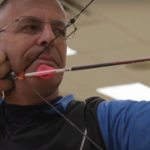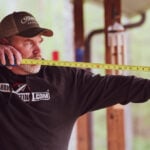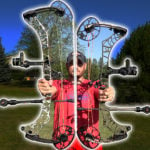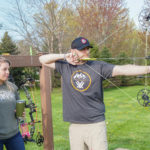Compound bows are intricate tools with many technical workings. To everyday bowhunters, cams, risers, limbs, bowstrings and cables are virtually all that meet the eye. And as long as a given bow draws smoothly and shoots accurately, there’s little reason to question anything else. One attribute of bows, though, that isn’t often discussed is brace height. While virtually all manufacturers list each bow model’s brace height on their websites and in their catalogs, very few bowhunters actually understand what it is or why it’s important. So what is brace height?
If you’re new to bowhunting or just haven’t immersed yourself in the technical aspects of bows, we’ll uncover several important points regarding bow brace height. Follow along.
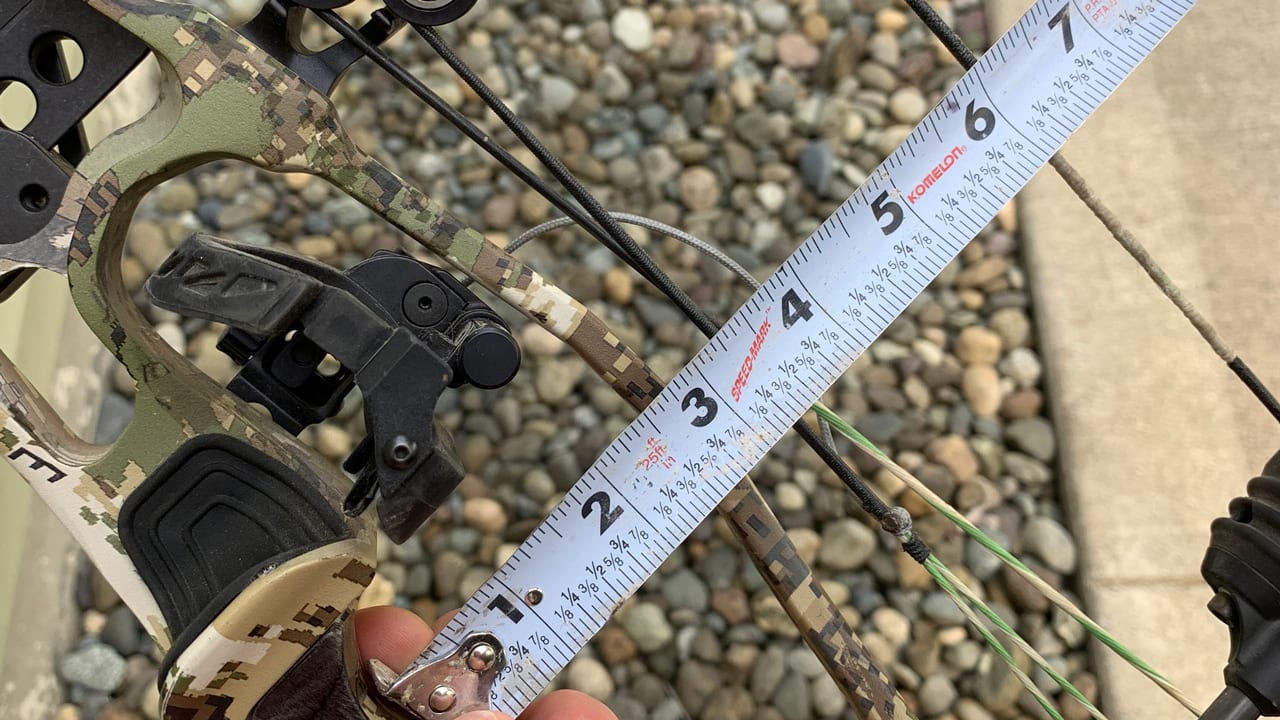
The author considers bows with a 6-inch-or-shorter brace height to be short and those approaching or exceeding 7 inches to be long. Interestingly, some of the author’s favorite bows over the years are and were those with 6-inch brace heights, therefore implying that tuning, gripping and shooting form are more important than brace-height length. (Photo by Becca McDougal)
What It Is and How to Measure It
Brace height — this applies to both traditional and compound bows — refers to the measurement from the bow grip’s deepest point — the throat — to the bowstring when the bow is at rest. On many bows, this measurement is generally the same as the measurement from the center of the rest-mounting hole back to the bowstring. Most modern compound bows have a brace height of 6 to 7 inches, some slightly more or less.
How It Affects Bow Performance
A short brace height offers the benefit of higher arrow velocity. This is because the bowstring is being drawn farther in order to reach the user’s draw length since, at rest, the bowstring is closer to the bow grip. As an example, an archer with a 30-inch draw length using a bow with a 5-inch brace height will draw the bowstring 25 inches.
The additional speed comes at the expense of forgiveness, however. Since the bowstring is drawn farther, the arrow stays connected to the bowstring longer during the shot cycle. That means any imperfections with the bow or archer during the shot cycle will be magnified. Things like bow torque or a poorly tuned rest will impose a greater effect to the arrow flight, thereby reducing accuracy.
Now, I’m not saying that a bow with a short brace height will shoot poorly. It just means that tuning and shooting form must be excellent in order to harness the greatest accuracy from a bow with a short brace height.
Now, to contrast the points I presented regarding bows with short brace heights, let’s explore the pros and cons of bows with longer brace heights. Depending upon the bow’s cam system, bows with longer brace heights generally shoot slower than those with shorter brace heights. But, sacrificing speed comes with undeniable benefit.
A longer brace height puts more distance between the throat of the bow grip and the bowstring. This means that the bowstring won’t be drawn as far to reach the shooter’s draw length. To compare this to my previous example, a shooter with a 30-inch draw length shooting a bow with a 7 ½-inch brace height will draw the bowstring 22 ½ inches. This means the arrow will depart from the bowstring faster during the shot cycle, providing more forgiving arrow flight despite tuning flaws or poor shooting form. It’s not to say that you can expect to use sloppy form and still shoot just as well. I’m just saying that any flaws you make during a difficult bowhunting shot situation will have less effect on arrow flight.
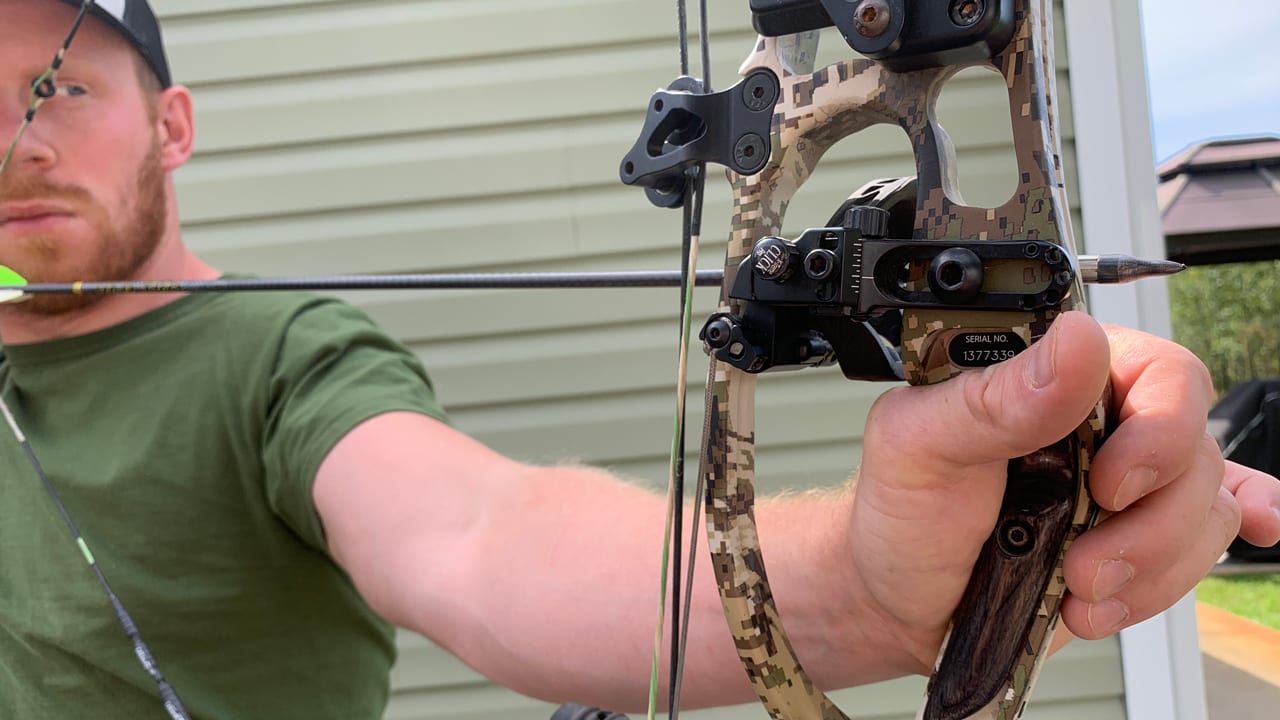
A bow with a long brace height is more forgiving since the arrow departs from the bowstring faster. Things like bow torque, sloppy shooting form or a poorly tuned bow will affect accuracy on any bow, but especially on bows with shorter brace heights since the arrow is attached to the bowstring longer and magnifying problems. (Photo by Becca McDougal)
What Is Long and What Is Short?
Some archers might see things differently, but in my 20-some years of shooting bows, I’ve concluded that brace heights measuring 6 inches or less could be classified as short and less forgiving. Anything greater than 6 inches falls into the more forgiving category. Of course, brace heights greater than 7 inches produce the most forgiveness. But, given the advancements in bow technology, I see no reason a solid shooter couldn’t shoot as well with a 6 1/2-inch brace height as a 7-inch brace height.
Personally, some of my best-shooting bows ever have been those with 6-inch brace heights. They are the Mathews Prestige, Hoyt Katera and Hoyt HyperForce. All three bows shot more accurately than many other bows I’ve owned with 7-inch-plus brace heights. This proves that shooting form, grip comfort and the individual bow’s overall fit and feel are more important than the length of the bow’s brace height, at least in my opinion.
String Slap
One potential problem a bow with a short brace height poses is bowstring contact with your arm or sleeve. Since the bowstring starts closer to the grip, it’s closer to your inner forearm (just behind your wrist). Add some bulky hunting apparel to the equation, and the likelihood of bowstring slap increases.
Not only is bowstring slap typically painful, but it alters arrow flight, sometimes severely. Some archers grip their bows in such a way that bowstring slap is more prone to happen. Usually, they get their bow hand very involved with the grip — a death clench, if you will. If that’s you, I’d suggest choosing a bow with a longer brace height or altering your grip so that only about one third of your palm is contacting the grip.
Brace height isn’t always the blame for bowstring interference. Another problem that can instigate bowstring slap is shooting too long a draw length. I’ve seen this happen to many archers in my day. Get fitted by an expert if you have any doubts about your draw length. Not only will you become steadier, but you’ll likely alleviate bowstring slap.
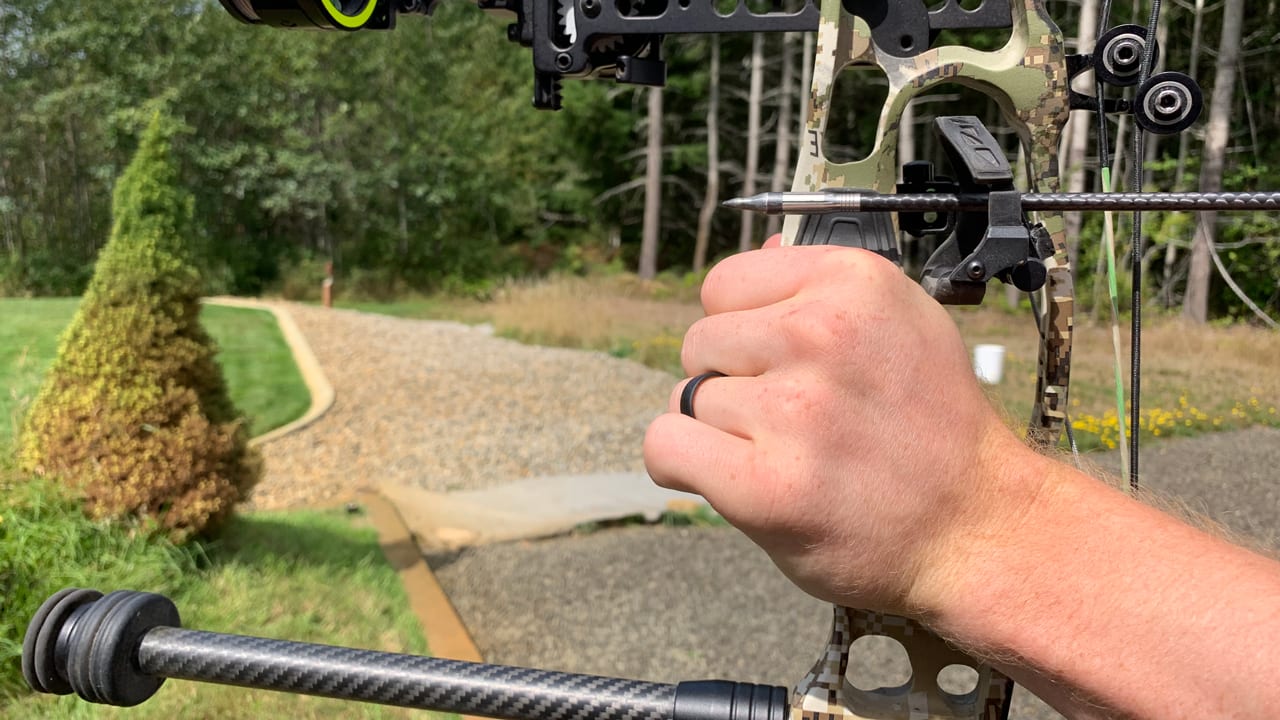
A short brace height puts the bowstring closer to your inner forearm. Thus, bowstring slap can be a valid concern unless you grip the bow properly and position your arm with your elbow slightly bent and pointing outward from the bowstring path. (Photo by Becca McDougal)
Tuning
Knowing your bow’s spec brace height is both important and useful for tuning. In particular, when you install a new bowstring and cable(s), it’s critical to measure the brace height. If it measures differently than the spec brace height, it’s usually a sign that you need to add or take out some twists in order to get the bow to its spec brace height.
What is Brace Height? – Final Shot
Now that we’ve unraveled the important points regarding bow brace height, it’s time to decide what’s right for you. As we discussed, there are certainly tradeoffs to both. If you don’t care about speed, then going with a 7-inch-or-longer brace height is probably best. If you want to harness some extra velocity and have been shooting for many years, you could shoot very well with a shorter brace height, so long as the bow grip fits your hand well, you use great shooting form and the bow is properly tuned.
Guide your decisions by the points I’ve addressed here, and you can’t go wrong.

 By
By 